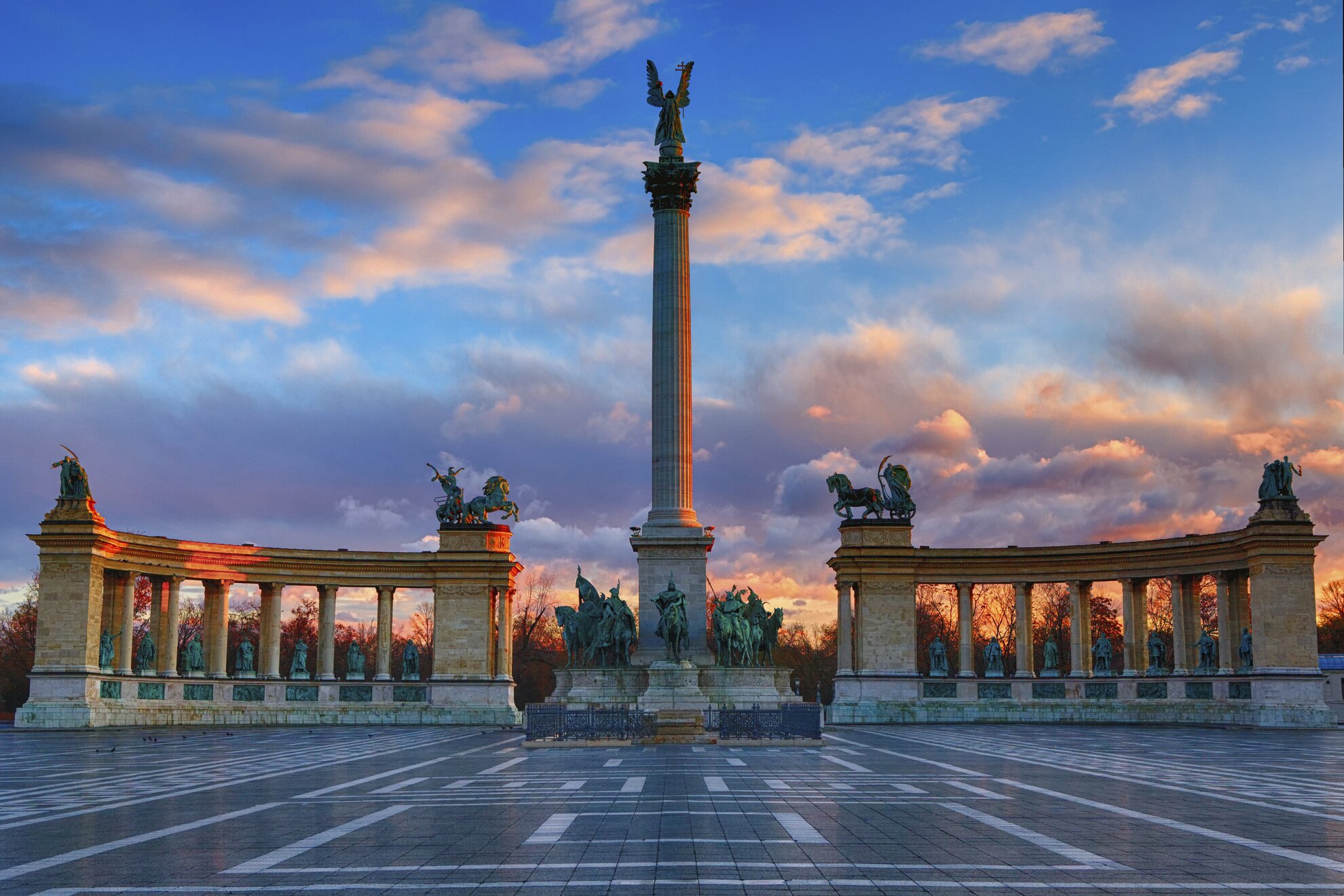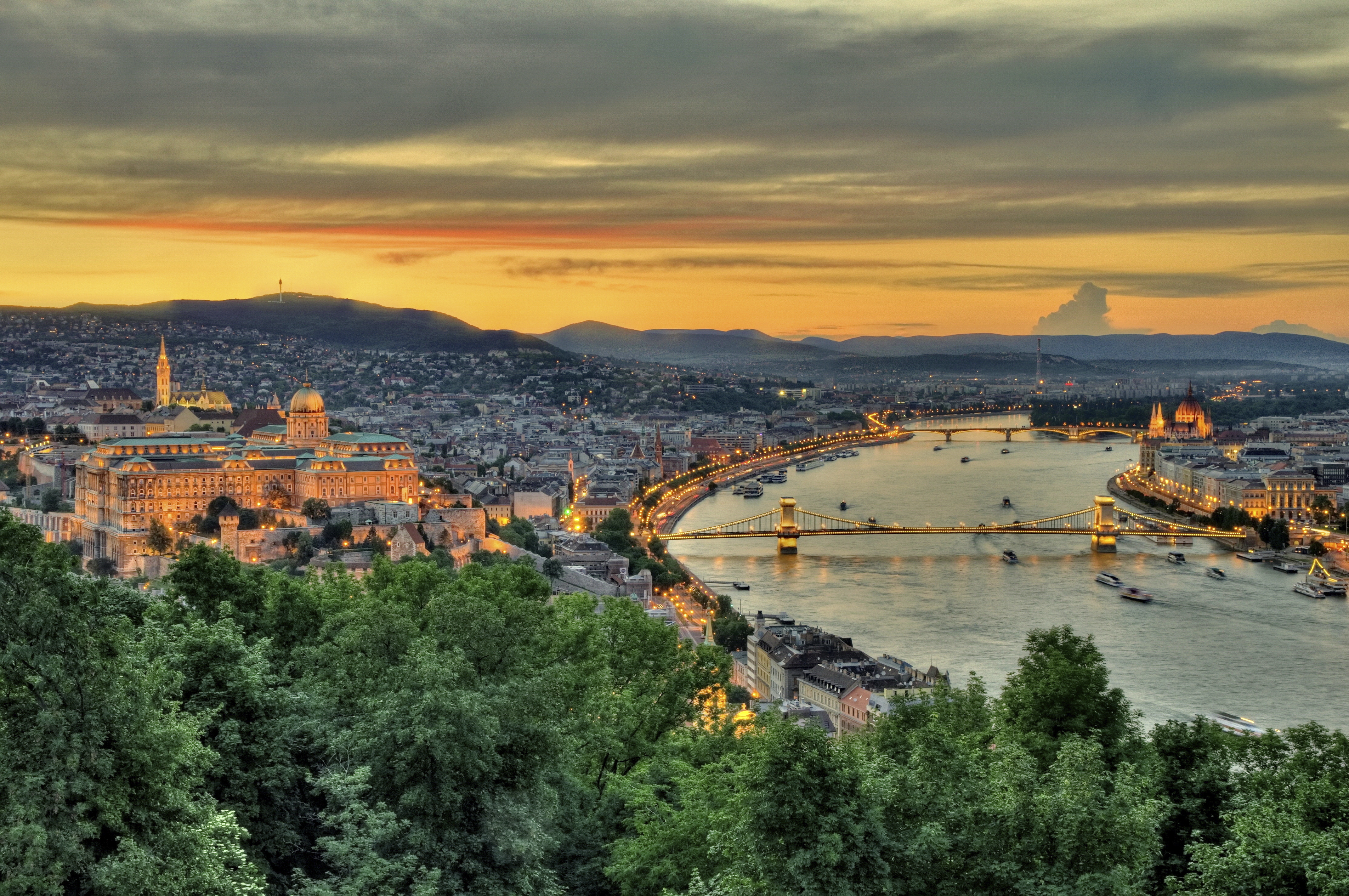The UNESCO World Heritage List is a prestigious group of cultural and natural sites of outstanding value to the heritage of humanity. It is administered by the World Heritage Programme – a part of the United Nations Educational, Scientific and Cultural Organisation (UNESCO). Aside from naming these sites, the aim is also to help preserve what is World Heritage Listed. Hungary currently has eight places on the Heritage List, including its capital Budapest - more specifically the Buda Castle district, Budapest’s Danube banks and Andrássy Avenue. It is hoped that in the future other sites will also be added. While you’re in Budapest you will no doubt see many of these sites, but it’s worth taking a fresh look through the prism of the World Heritage List and consider their special historical and cultural significance.
Banks of the DanubeThe banks of the Danube in Budapest were added to the World Heritage List in 1987. This encompasses from the Gellért Hill to Margaret Bridge. Sites along this stretch of the Danube include the Rudas Baths, the Chain Bridge, Liberty Bridge, Elizabeth Bridge, Gresham Palace, the Hungarian Academy of Sciences, the neo-gothic Parliament, and the Vigadó concert hall.
In addition to these prominent buildings, the banks of the Danube are lined with 19th century buildings, which are also protected under the World Heritage List. We recommend the spectacular view of this part of the Danube from either Margaret Bridge or Chain Bridge, or from up-high on Gellért Hill or Fisherman’s Bastion.The historical significance of this stretch of the Danube also relates to the ancient Roman town of Aquincum that was centred at what is now Óbuda. It was a border province of the Roman Empire in the 2nd Century AD and capital of what was then Pannonia. Many ruins remain from this period including a Mithraeum (a temple to a Roman god) and two amphitheatres (one military and one civil) used for gladiatorial combat and beast fights!!Buda Castle QuarterIn the same year, the Buda Castle Quarter joined the Danube embankments on the World Heritage List. The Buda Castle Quarter has examples of Medieval, Baroque and 19th century houses, and is also the site of the Buda Castle - first built in 1265 - which was the complex used by Hungarian Kings. The World Heritage Listing includes the Sándor Palace, the 700-year-old Matthias Church, the labyrinth of underground caves, the Holy Trinity Square, Fisherman’s Bastion, and of course the domed Buda Palace that looms over the city atop Castle Hill. The Royal Palace itself now houses museums such as the National Széchényi Library and Hungarian National Gallery.
It's worth spending a few hours - or even a full day - exploring the Castle Quarter. There are numerous cafes and restaurants here, and it's easily accessed by using the funicular from the foot of the Chain Bridge.Andrássy AvenueBudapest’s World Heritage sites were extended in 2002 with the prestigious Andrássy Avenue also added. The grand boulevard was built in the late 1800s and is lined with grand buildings, which were once largely exclusive apartments but now also house offices and embassies.
The Heritage Listed boulevard includes the Miklós Ybl-designed Hungarian State Opera Building; the Academy of Music - founded by famous Hungarian composer Ferenc Liszt; the so-called “Drechsler Palace”, and the villas making up the Kodály Circus – one of which unfortunately caught fire in 2014.
While taking in the sites along Andrássy Avenue, it’s worth looking up – the buildings’ facades are simply breathtaking; adorned with statues, columns, window decorations and other design features. Cafes, restaurants and luxury boutiques fill the tree-lined street.
The inclusion of Andrássy Avenue is in part for its role in transforming Budapest’s urban structure – it is a radial street that cut through a previously unregulated suburban area. It was a feat in terms of public service, transportation and city planning, that the city desperately needed since no urban development had really occurred since the Middle Ages. The road was named after Prime Minister Count Gyula Andrássy who was Prime Minister between 1867-71.
What’s more is that what can be found underground is also Heritage Listed. The M1 underground, which was the first in continental Europe (built 1893-96), is also included. The more than 100-year-old underground is still in use and connects Deák Ferenc Square to the City Park area.

The buildings and structures that mark the end of the Andrássy Avenue are also included in the
World Heritage List:
Heroes’ Square, the Museum of Fine Arts and Kunsthalle.
The two colonnades at Heroes' Square display 14 important historical figures of Hungary, forming a semi-circle around a column that is topped by the archangel Gabriel and surrounded by the seven Magyar chieftains. Behind Heroes’ Square is City Park, Vajdahunyad Castle and the Széchenyi Baths.Lechner’s works to be added to World Heritage List?As we recently wrote in an article on Budapest’s stunning Art Nouveau buildings, it is hoped five buildings of master Hungarian Architect, Ödön Lechner, will also be added to the World Heritage List. These include the Museum of Applied Arts, the Szent László Church in Kőbánya, the State Geological Institute, the Postal Savings Bank and the City Hall in Kecskemét.Other World Heritage sites around HungaryIf you have the chance to travel around Hungary, there are seven other cultural and natural sites featuring on the World Heritage List. These are: the old village of Hollókő and its surrounds; the caves of Aggtelek Karst and Slovak Karst; the Millenary Benedictine Abbey of Pannonhalma and its natural environment; Hortobágy National Park; the Early Christian Necropolist of Pécs; Fertö/Neusiedlersee Cultural Landscape; and the Tokaj Wine Region Historic Cultural Landscape.




